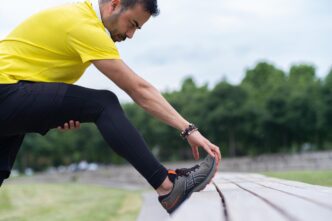A Quick Takeaway
The Story Behind the Trend
How to Make It Work for You
The Community View
For anyone experiencing the persistent discomfort of joint pain, whether from arthritis, previous injury, or the natural progression of age, embracing low-impact workouts offers a powerful, evidence-based pathway to renewed mobility and reduced discomfort. These carefully selected exercises minimize stress on vulnerable joints while simultaneously building strength, enhancing flexibility, and improving overall physical function, making them an essential component of a sustainable, pain-management strategy. By consistently engaging in these gentle yet effective activities, individuals can actively work towards a healthier, more active lifestyle, often alleviating pain and preventing further joint degradation.
Understanding Joint Pain and the Power of Movement
Joint pain often leads individuals to believe that rest is the only remedy, but prolonged inactivity can actually exacerbate the problem. Our joints thrive on movement, which helps circulate synovial fluid, a natural lubricant that nourishes cartilage and removes waste products. Without this crucial movement, cartilage can become stiff and deconditioned, potentially worsening pain and limiting range of motion.
Incorporating appropriate exercise is not just about strengthening muscles; it’s about improving the health of the joint itself. Regular, controlled movement can enhance joint stability, reduce inflammation, and even contribute to better pain management over time. The key lies in choosing the right types of activities that support, rather than stress, your joints.
What Defines a “Low-Impact” Workout?
A low-impact workout is characterized by movements that place minimal stress or jarring force on the joints. Unlike high-impact activities such as running or jumping, where both feet may leave the ground simultaneously, low-impact exercises typically maintain continuous contact with a surface, or involve movements that are fluid and controlled. This distinction is crucial for protecting cartilage and bone while still providing a beneficial cardiovascular and strength challenge.
These types of exercises prioritize smooth transitions and controlled exertion, making them ideal for individuals who need to protect their knees, hips, ankles, and spine. They allow for sustained activity without the repetitive shock that can aggravate sensitive joints. Understanding this principle is the first step toward building an effective and safe exercise routine.
Key Benefits of Low-Impact Exercise for Joint Health
Beyond simply avoiding pain, low-impact exercises offer a multitude of direct benefits for joint health. They are instrumental in reducing the load on weight-bearing joints, which is critical for conditions like osteoarthritis. The gentle compression and decompression during movement help pump nutrients into the cartilage, promoting its health and resilience.
Furthermore, these workouts strengthen the muscles surrounding the joints, providing crucial support and stability that can significantly reduce pain and prevent injury. Improved flexibility and range of motion are also common outcomes, allowing for easier execution of daily tasks and a greater sense of freedom in movement. Ultimately, embracing low-impact activities can lead to a significant improvement in overall quality of life by mitigating chronic pain and fostering greater independence.
Expert-Approved Low-Impact Workouts to Get You Moving
A variety of exercises fit the low-impact criteria, each offering unique advantages for joint health and overall fitness. The best approach often involves incorporating a mix of these activities to ensure comprehensive physical conditioning.
Aquatic Exercise (Swimming and Water Aerobics)
The buoyancy of water provides unparalleled support, reducing the effects of gravity on the joints by up to 90%. This makes swimming, water walking, and water aerobics incredibly effective for individuals with severe joint pain or limited mobility. Water workouts allow for a full range of motion with minimal impact, strengthening muscles and improving cardiovascular health simultaneously.
Cycling (Stationary or Outdoor)
Whether on a stationary bike in the gym or cycling outdoors, this activity is largely non-weight bearing, making it kind to the knees and hips. Cycling builds leg strength, improves cardiovascular endurance, and can be easily adjusted for intensity. Ensure proper bike fit to maintain good posture and prevent strain on the back or neck.
Walking
Often overlooked, walking is one of the most accessible and beneficial low-impact exercises. It’s a natural movement that improves circulation, strengthens leg muscles, and maintains joint mobility without excessive stress. Start with short distances and gradually increase duration and pace as comfort allows, always prioritizing comfortable footwear.
Elliptical Training
An elliptical machine provides a fantastic full-body workout that mimics the motion of running or walking without the associated impact. The gliding motion is smooth and continuous, engaging both the upper and lower body while protecting the joints. Many ellipticals also allow for reverse pedaling, which can target different muscle groups.
Yoga and Pilates
These mind-body disciplines focus on controlled movements, flexibility, core strength, and body awareness. Both yoga and Pilates emphasize proper alignment and can be modified to suit various fitness levels and joint conditions. They are excellent for improving balance, posture, and joint stability through gentle, sustained stretches and strengthening exercises.
Tai Chi
An ancient Chinese martial art, Tai Chi involves slow, flowing movements, deep breathing, and meditation. It is renowned for improving balance, flexibility, and muscle strength, particularly in the lower body, while being incredibly gentle on the joints. Tai Chi is also highly effective for stress reduction and mental clarity.
Strength Training (Modified)
Building strong muscles around the joints is paramount for stability and pain reduction. Modified strength training, using lighter weights, resistance bands, or bodyweight exercises with controlled movements, can be highly effective. Focus on proper form and avoid exercises that cause sharp pain, opting for machine weights that offer greater support and guidance.
Important Considerations for Exercising with Joint Pain
Embarking on an exercise program with joint pain requires a thoughtful and cautious approach. Always listen to your body; some discomfort is normal when building strength, but sharp or increasing pain is a clear signal to stop and reassess. Begin with short durations and low intensity, gradually increasing as your body adapts and strengthens.
Prioritizing a thorough warm-up and cool-down is essential to prepare your joints and muscles for activity and aid in recovery. Proper form is more critical than intensity; if you are unsure, seek guidance from a qualified fitness professional or physical therapist. Consulting with a healthcare provider before starting any new exercise regimen is always recommended, especially if you have chronic joint conditions.
A Sustainable Path to Joint Health
Conquering joint pain through low-impact workouts is not about pushing through agony, but rather about embracing a sustainable, proactive approach to health. By integrating these expert-approved exercises into your routine, you can significantly reduce discomfort, enhance mobility, and improve your overall quality of life. Consistency, coupled with a mindful approach to movement, will pave the way for stronger, healthier joints and a more active future.








